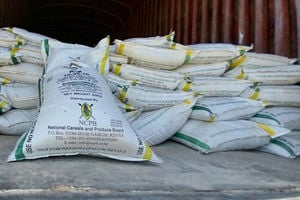
GRAPHIC | STANSLAUS MANTHI | NMG
|Business
Premium
Half of banks lean on CBK liquidity support, says IMF
Half of Kenyan banks were accessing liquidity support from the Central Bank of Kenya (CBK) by the end of September last year, reflecting difficulties in selling their bond holdings for cash due to depressed prices in the secondary market.
Disclosures made by the International Monetary Fund (IMF) in a country report on Kenya show 20 of the country’s 39 licensed banks were accessing the CBK’s discount window — a facility that supports banks that come under liquidity pressures arising from no fault of their own.
However, only a small percentage of banks had actual liquidity deficiency or thin buffers at the time of the preparation of the report.
“Banks with liquidity deficiency or thin buffers relative to prudential requirements accounted for three percent of total banking assets but 20 banks accounting for 62 percent of asset base were accessing the CBK’s discount window as of end-September 2023,” said the IMF in the report.
“The secondary market for government securities has dried up, leading some banks with comfortable liquidity ratios to also rely on the discount window.”
The IMF disclosures have laid bare the risk banks are facing from falling bond prices in the secondary market, prompting them to hold the securities even when in need of cash in order to avoid booking large losses.
Kenya has 39 licensed lenders, which by the end of September 2023 held assets worth Sh7.4 trillion, and liabilities of Sh6.5 trillion.
These banks access liquidity support from the CBK via various instruments, including reverse repurchase agreements (reverse repos), term auction deposits and the CBK discount window.
They can also get emergency funding from each other through the interbank lending market, also known as the overnight market, or through the horizontal repo market where they borrow from each other using their government securities as collateral.
Since mid-October, banks have accessed a cumulative Sh1.36 trillion via the repo market, where they get funding from the CBK against their holdings of government securities. The bulk of these funds have been accessed via the seven-day repo.
Banks have in recent years increased their investments in government bonds, partly due to rising risk of non-performing loans when lending to the private sector.
The lenders currently hold Sh2.31 trillion worth of government debt on their books, accounting for 45.9 percent of the State’s domestic public debt.
They are the biggest lender to the government domestically, ahead of pension funds (Sh1.51 trillion) and retail investors (Sh570.4 billion).
Commercial banks usually hold government securities in three ways; to term and at amortised cost which poses no risk of paper losses, government securities held for dealing purposes and under fair value through other comprehensive income (FVOCI). Securities held under FVOCI are usually kept for trading purposes but can also be held to term.
Diving into these holdings for conversion into cash for liquidity support has been complicated, however, by rising yields in the secondary market at the Nairobi Securities Exchange (NSE), which has caused the price of bonds to fall.
Bond yields and prices at the secondary market usually feature an inverse relationship where a rise in one signals a decline in the other.
Those who sell their securities before maturity do so either at a premium or discount of their face value—the actual value or cost of the bond— where the price is determined by the prevailing yield in the market.
All of the outstanding bonds at the NSE are currently trading at prices that are below par. This has forced many holders, including banks, to hold on to their bonds either until maturity or until prices improve.
In its report, the IMF highlighted the sovereign exposure risk facing banks on account of the rising interest rates, referencing stress tests carried out by the CBK using June 2023 banks’ balance sheet data.
In the stress test, the CBK noted that a three percentage point increase in its base lending rate would see yields on Treasury bonds go up 19.7 percent (by December 2023) from 16.2 percent in June 2023.
This, the CBK noted, would see 10 banks, including three in tier one, fail the capital adequacy stress test, albeit by a small margin.
In the period since the stress test was carried out, the CBK has increased its base lending rate by two percentage points to 12.5 percent, while the rates on the latest bond issuance earlier this month fell just shy of 19 percent.





